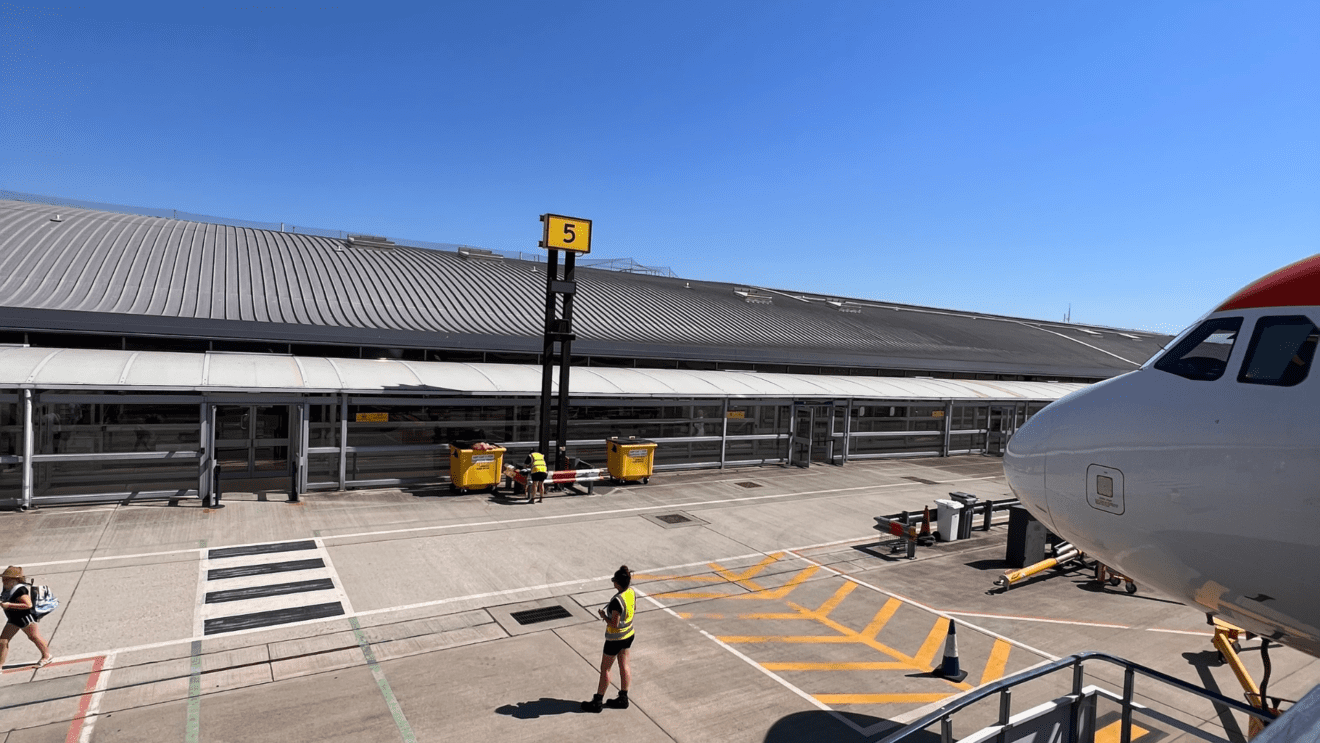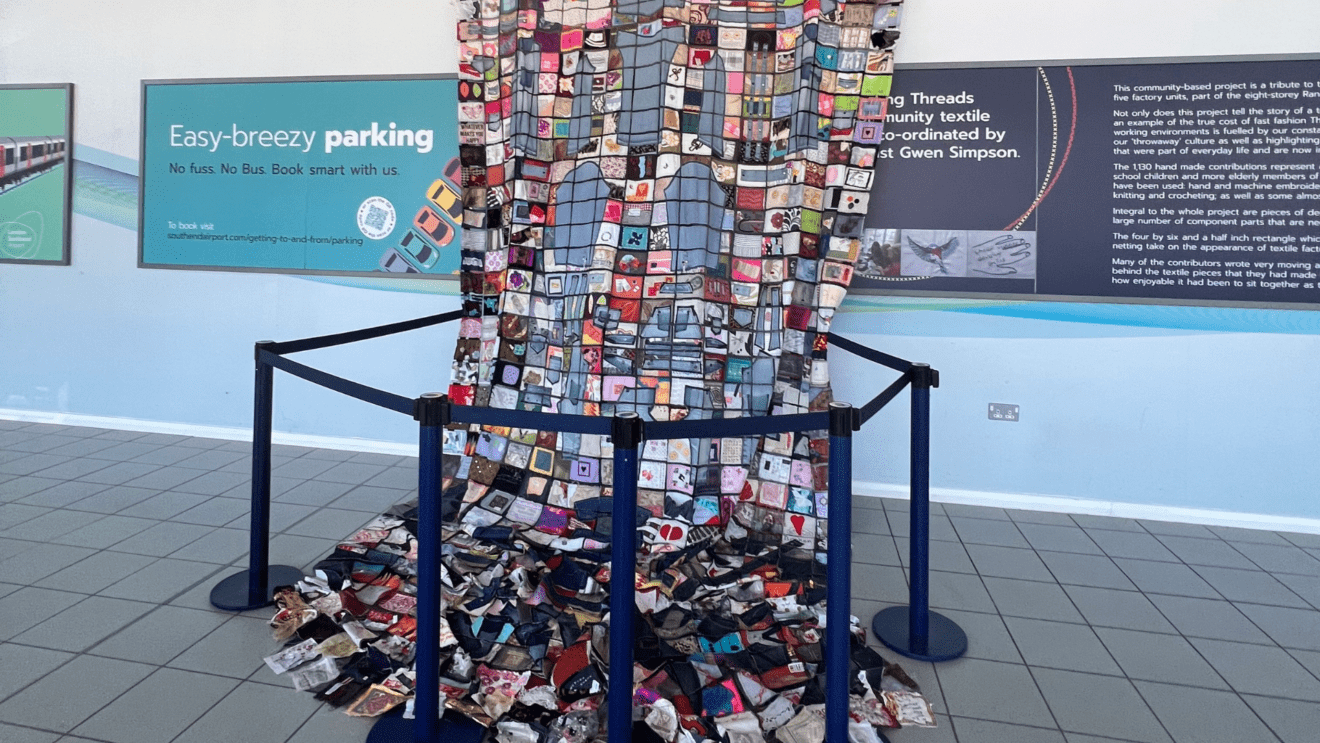
Abby Webb
Head of Search & Content
Abby heads up our SEO and content campaigns, with a strong background in copywriting, content and paid search marketing.

Discover how first-hand client research helped us to rebuild London Southend Airport’s website to reflect its greatest strengths.
Audience research and customer insight is a critical part of any successful digital marketing activity.
Last year, Base Creative undertook a project to rebuild London Southend Airport’s website to reflect its values and improve revenue generation.
To design the new website, it was vital that we first gain an exhaustive understanding of all of the needs of London Southend Airport’s passengers. This didn’t just mean understanding the airport experience at large. Our goal was to understand the nuances of the passenger experience at London Southend Airport in particular, from the layout and amenities to transport and security.
That’s why we became passengers.
In August 2022, Abby Webb, Head of Search & Content, and Rebecca Holloway, Senior Social Media Strategist, flew from London Southend Airport to Palma de Mallorca and back.
In this article, Abby explains how this approach to client research informed Base Creative’s focus and philosophy when designing London Southend Airport’s new site.

The purpose of becoming passengers at London Southend Airport was to greatly enhance our audience research with an in-person, immersive experience.
This insight would allow us to design the sitemap and determine which pages need to be included, rewritten or prioritised on the airport’s website. Understanding the key passenger demographics would help us tailor the site’s content to their needs and preferences. This included the tone of the content and what information was included. For example, if the airport serves mostly local families and couples, the content would reflect a more relaxed atmosphere, highlighting family-friendly amenities and the SKYCAFÉ.
Observing the airport staff and their interactions with passengers would also provide valuable insights into the tone and culture of the airport. Identifying challenges that passengers may encounter, such as confusion on luggage and check-in procedures, would help us provide clear and concise information to alleviate any stress or anxiety for passengers.
By conducting in-person audience research, we supplemented our detailed keyword and user behaviour research. This ultimately led to a more comprehensive understanding of the airport’s audience and their needs, resulting in a more effective and user-friendly airport website.
Here are some of our takeaways and how they impacted the new site.

Everybody likes going on holiday, but not all airports make it easy. When I think of going through an airport, I get visions of queues, waiting rooms, and checking my boarding pass over and over to make sure I have the right time and terminal.
London Southend Airport’s convenience is one of its greatest strengths. I live locally, but it took Rebecca less than an hour to get the train from London Liverpool Street to Southend Airport station. Once you’re there, the terminal is just 100 paces away.
The terminal’s physical layout is very straightforward. Rebecca described it as “the least stressed I’ve ever felt going on a plane,” and I have to agree. This experience reinforced the idea that the website needed to be just as user-friendly and straightforward as the airport itself. We were determined to create a site that mirrored the convenience and ease of navigation that customers experienced in person
Within the website, we prioritised the development of an intuitive search function, which allows visitors to find the information they need quickly and easily.
This experience also informed our decision to develop an in-depth set of FAQs based on competitor and keyword research. Then, to make it even easier for visitors to find helpful information, we ensured that key questions were included on relevant pages throughout the website. The search results even show any relevant FAQs to the visitor’s question in full without the need to click additional links.
These choices aren’t just about making the website as easy to use as flying from the airport. It’s about helping passengers feel confident choosing their destination, booking their holiday, and getting to and from the airport by answering any queries they might have before they fly.
One of the standout moments of our experience was at border control. Often, border control is one of the final, stressful experiences of flying. You can feel bombarded with questions.
When the UK Border Force staff at London Southend Airport asked us questions, they seemed genuinely invested in the service the airport had provided. They asked about our holiday, how we’d enjoyed Mallorca and what we’d done over the weekend. Even though they weren’t directly employed by the airport, it was clear the positive company culture was infectious.
The airport staff kept things moving, but they never sacrificed their friendliness. They were always willing to help out, answer questions and always wanted to make sure we were having the best, stress-free experience.
To match this airport experience online, we worked hard to ensure all new and existing content was adapted to reflect this friendly, helpful tone. Now, when you visit the site, its voice reflects one of the airport’s greatest assets – its staff.

It was obvious that everyone working at the airport felt pride in their work. Every business wants their staff to feel that way, but chatting with some of the staff it was clear London Southend Airport had an ace up its sleeve.
Practically everyone employed by London Southend Airport lived nearby. They weren’t just serving passengers, they were directly serving their community.
London Southend Airport offers employment opportunities and infrastructure, and draws other business to Southend from flight clubs to film crews, and private fliers via the London Southend Jet Centre. Our visit made it clear that this sense of contributing to their community was a key motivator behind the staff members’ helpful, friendly attitude.
That connection to a community is something few airports can boast, especially around London. It also became clear to us that London Southend Airport’s connection to the local community needed to be reflected on the new site.
Our research had already shown how many people were using the existing site to search for job opportunities. To meet this demand, the airport’s workplace culture is now showcased through a comprehensive “Working at London Southend Airport” section.
Here, prospective employees can get a glimpse into what it’s like to work at the airport, while our enhanced “Careers” page makes it easy to find out which vacancies are available across the airport in highly valued areas like Air Traffic Control. .
As well as a new section focused on potential employees, the new website has a “Corporate & Community” section with sections on environmental responsibility, charity, noise management and other community-focused initiatives. It also reintroduces a “News” section which houses press releases to make sure that this audience is up to date with all upcoming opportunities.
Our in-person, real life and immersive experience and research at London Southend Airport is reflected all over the new site. It informed the philosophy underlying our design, and made sure that the site was rooted in the business’ greatest strengths.
It’s common for digital agencies to rely on the digital world for their client research. Keyword and competitor research is vital, but at Base Creative we know that it isn’t sufficient in the discovery & strategy stage. You need to step into a customer’s shoes and experience the service first-hand to understand the client and their customer inside and out, to provide an exceptional service.
Got any questions? Email me at [email protected].

Head of Search & Content
Abby heads up our SEO and content campaigns, with a strong background in copywriting, content and paid search marketing.
View my other articles and opinion pieces below
Google’s AI search demands higher standards for YMYL content. Learn how to keep your financial, legal or health advice visible, trusted and compliant.

At Google Marketing Live 2025, the focus was clear: AI is already changing the way people search, and as a result, it’s changing what brands need to do to show up in search results. Here’s what you need to know – and what it means for your marketing.

Love it or hate it, everyone’s seen it. Google’s AI Overviews are changing the way your search results appear. Now, AI-generated summaries will often answer user questions before the usual list of site links we’ve come to expect. In fact, 47% of Google Search results now include an AI Overview – at least, according to AI […]

This short guide will teach you how to track your marketing campaigns using UTM parameters. Also referred to as a custom URL, a UTM tag is a customised snippet of text (called a parameter) that is added at the end of a website address. This UTM tag allows you to track and identify the traffic […]
